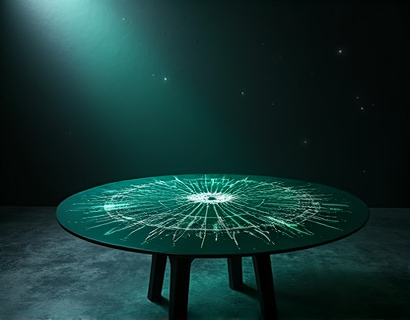Uncovering the Ancient Secrets of the Indus Valley: In-Depth Insights and Exclusive Heritage Merchandise
The Indus Valley Civilization, one of the oldest and most enigmatic cultures in human history, has long captivated the imagination of historians, archaeologists, and enthusiasts alike. Spanning from around 3300 BCE to 1300 BCE, this civilization thrived in the fertile plains of the Indus River, covering parts of present-day Pakistan and northwestern India. Despite its significance, much of the Indus Valley Civilization remains shrouded in mystery, with its script yet to be fully deciphered. This article delves into the rich and complex world of the Indus Valley, offering in-depth insights and highlighting a curated selection of heritage merchandise that honors this ancient culture.
The Indus Valley Civilization is renowned for its advanced urban planning and sophisticated water management systems. Cities like Harappa and Mohenjo-Daro, though not to be referred to as Mohenjadaro in this context, stand as testament to the civilization's architectural prowess. These urban centers were built with baked bricks, featuring well-planned streets, drainage systems, and public baths. The Great Bath of Mohenjo-Daro, a remarkable structure, suggests a deep understanding of hygiene and ritual purity, aspects that were integral to the daily life of its inhabitants.
One of the most intriguing aspects of the Indus Valley Civilization is its writing system. Over 400 distinct signs have been identified, but despite extensive research, the language remains undeciphered. This has led to various theories and speculations about its nature, with some scholars suggesting it might be a proto-Dravidian language or even a form of proto-Sinaitic script. The lack of bilingual inscriptions, similar to those found in other ancient civilizations, has made deciphering the script an elusive goal. However, ongoing research and technological advancements offer hope for future breakthroughs.
The society of the Indus Valley was remarkably egalitarian for its time. Archaeological evidence indicates that there were no significant differences in the size and quality of houses across the urban areas, suggesting a lack of social stratification based on wealth. This contrasts sharply with contemporary civilizations like Mesopotamia and Egypt, where clear social hierarchies were evident. The absence of grand palaces or temples dedicated to a single deity also points to a society that valued communal well-being over individual or religious authority.
Trade played a crucial role in the prosperity of the Indus Valley Civilization. The civilization had extensive trade networks that extended to Mesopotamia, the Persian Gulf, and even Central Asia. Archaeological findings include seals and weight standards that indicate a sophisticated system of commerce. The discovery of Indus Valley pottery and artifacts in distant lands underscores the reach of their trade routes. Merchants likely transported goods such as cotton textiles, spices, and precious stones, contributing to the civilization's economic strength.
Agriculture was the backbone of the Indus Valley economy. The fertile plains of the Indus River provided ideal conditions for cultivating crops like wheat, barley, and possibly cotton. The civilization's advanced irrigation systems, including canals and reservoirs, ensured a steady water supply, enabling year-round farming. This agricultural abundance supported a growing population and allowed for the development of specialized crafts and trades. Evidence of pottery, metalwork, and jewelry production indicates a high level of craftsmanship and artistic expression.
The Indus Valley Civilization also had a profound impact on the cultural and religious practices of subsequent regions. The presence of female figurines, often interpreted as deities or symbols of fertility, suggests a matriarchal or at least gender-equitable religious system. While the exact nature of their religious beliefs remains unknown, the reverence for natural elements and the importance of water in their rituals are evident. These practices likely influenced later cultures in the region, including the Vedic traditions of ancient India.
Art and aesthetics were integral to Indus Valley life. The civilization produced a variety of artifacts, from intricate seals to beautifully crafted beads and jewelry. The famous "Priest-King" statue, a limestone figure with a distinctive headdress, exemplifies the artistic skills of the period. These artifacts not only showcase the technical expertise of the Indus people but also provide insights into their social and religious life. The use of standardized weights and measures further indicates a society that valued precision and order.
In recent years, archaeological excavations have uncovered new sites and artifacts that continue to shed light on the Indus Valley Civilization. The discovery of the Rakhigarhi site, one of the largest Indus cities, has provided valuable insights into the urban layout and social structure. Similarly, findings from Dholavira, with its complex water management systems, highlight the ingenuity of the Indus people. These discoveries underscore the need for continued research and exploration to fully understand this ancient culture.
For those eager to delve deeper into the world of the Indus Valley Civilization, a variety of resources are available. Academic journals, books, and documentaries offer comprehensive overviews and detailed analyses. Museums around the world, such as the National Museum in New Delhi and the Pakistan Museum of Natural History, house extensive collections of Indus artifacts. Online platforms and virtual tours provide accessible ways to explore these historical sites and learn about the civilization's achievements.
In addition to educational resources, a range of heritage merchandise is available to honor and celebrate the Indus Valley Civilization. From replicas of Indus seals to handcrafted jewelry inspired by ancient designs, these items serve as tangible connections to the past. Art prints featuring archaeological sites and detailed illustrations of artifacts can adorn homes and offices, bringing a piece of history into everyday life. Such merchandise not only supports the preservation of cultural heritage but also fosters a deeper appreciation for this remarkable civilization.
The Indus Valley Civilization remains a fascinating subject of study, offering insights into the development of early urban societies and the complexities of ancient cultures. Its legacy continues to influence contemporary thought and practice, from urban planning to religious beliefs. By exploring the rich history and diverse achievements of this civilization, we gain a deeper understanding of the roots of human civilization and the enduring human spirit.










































